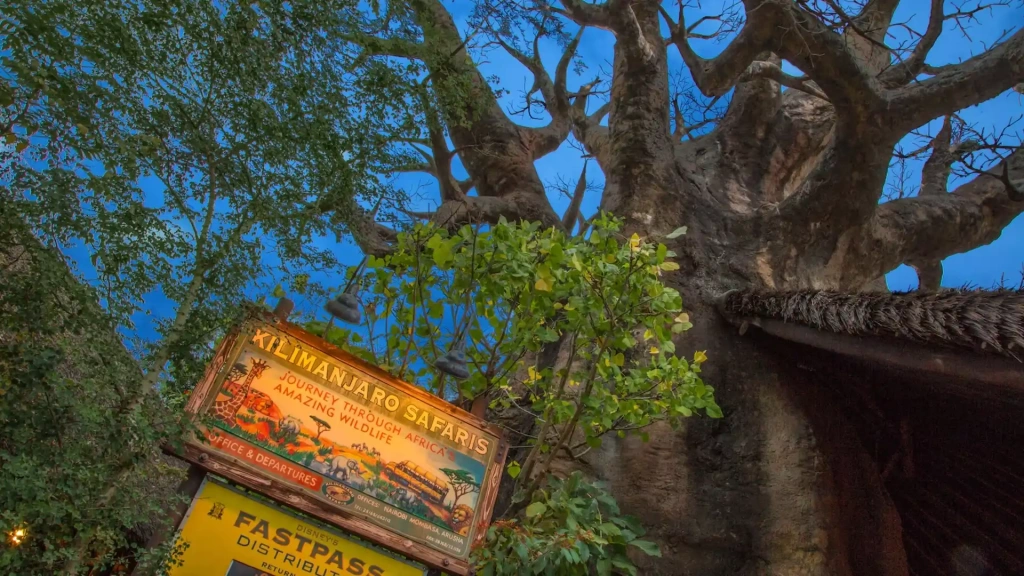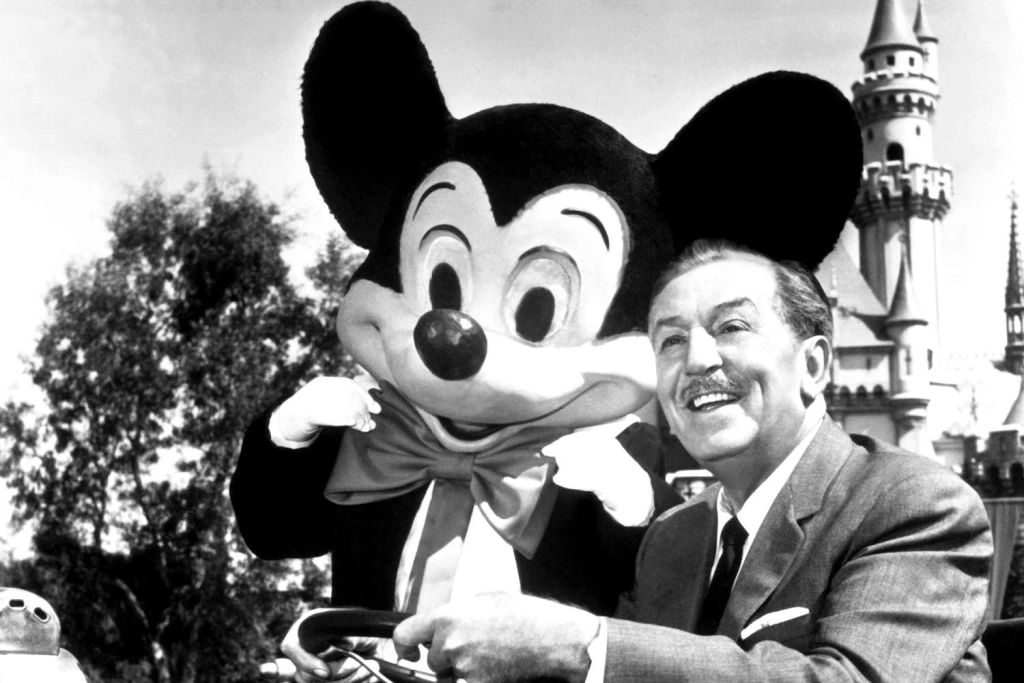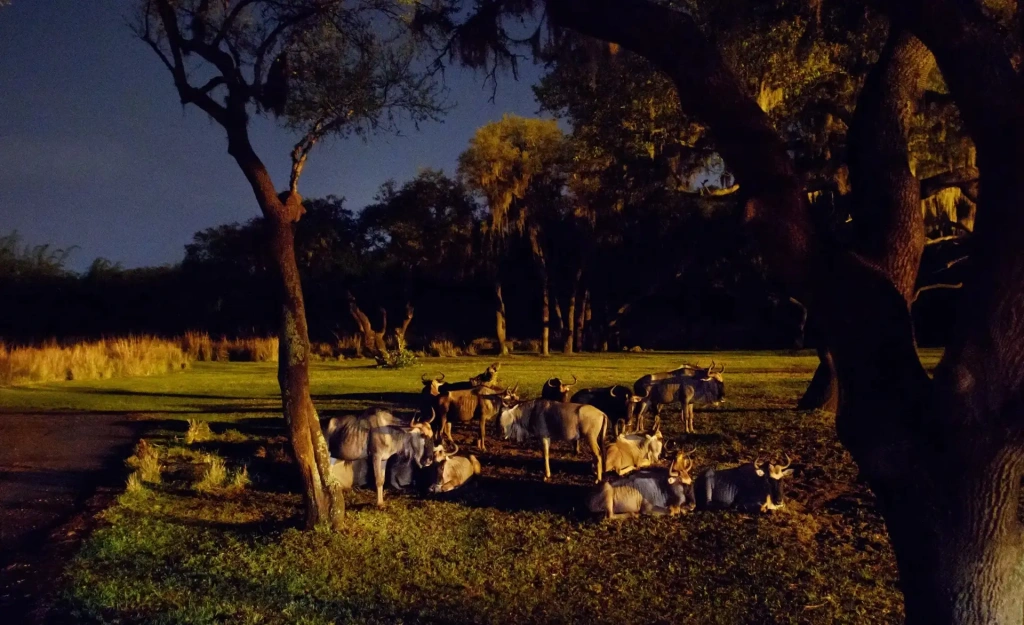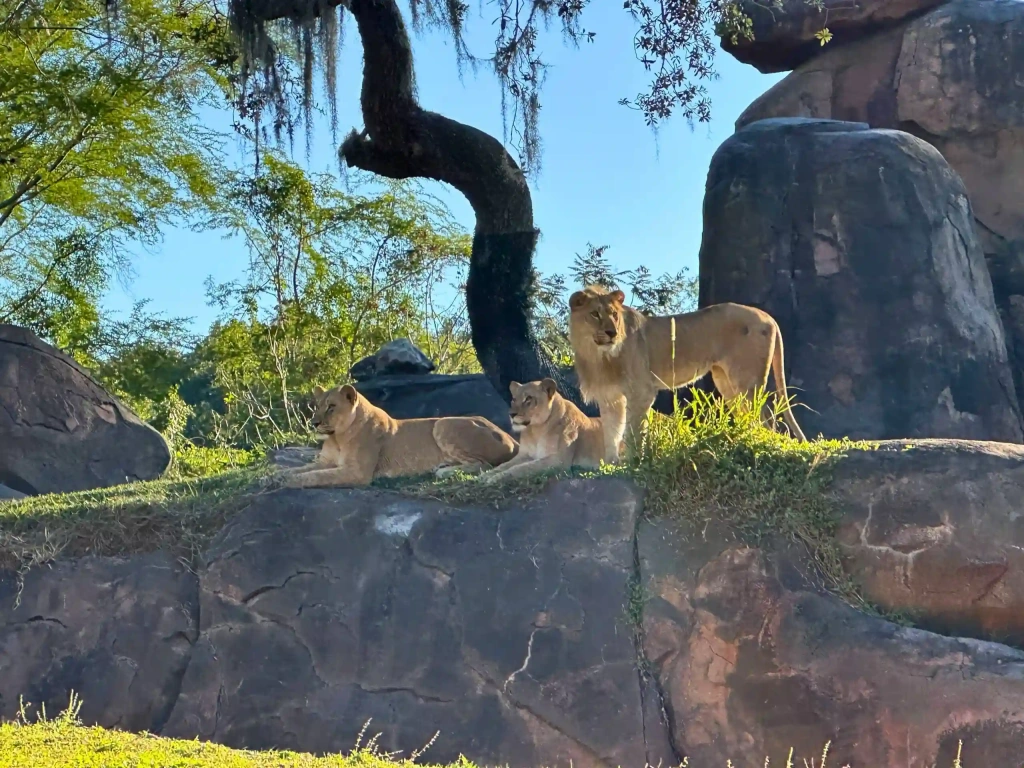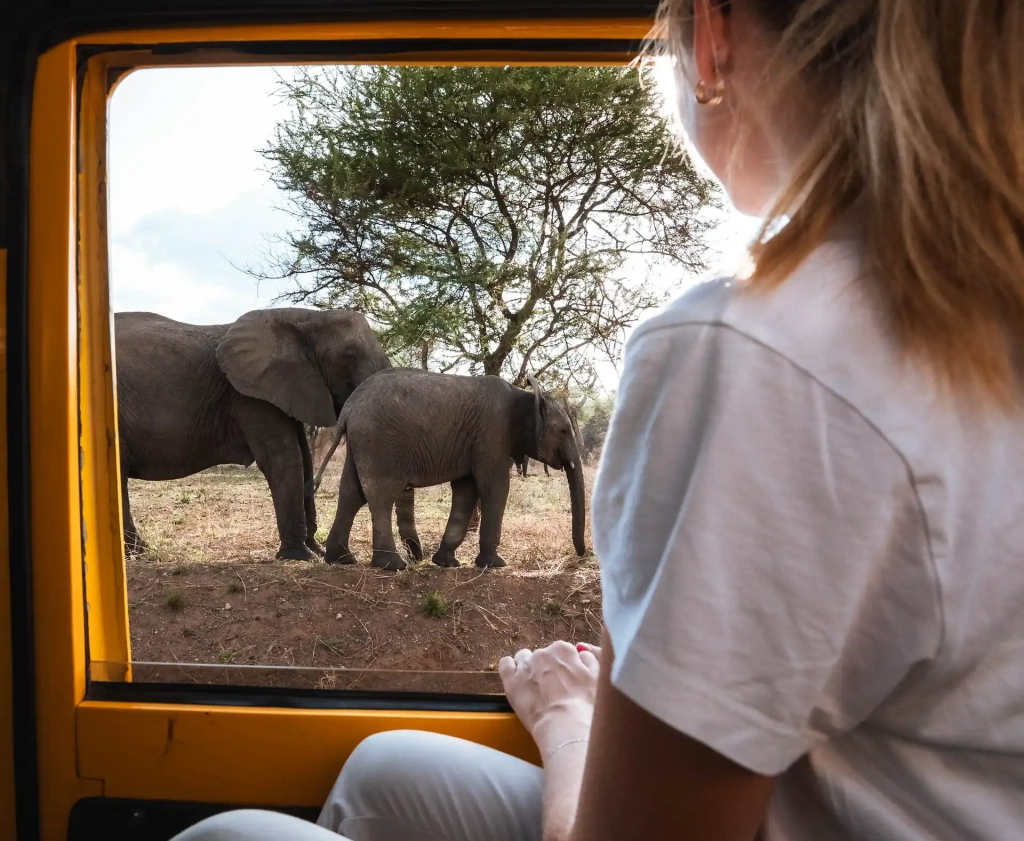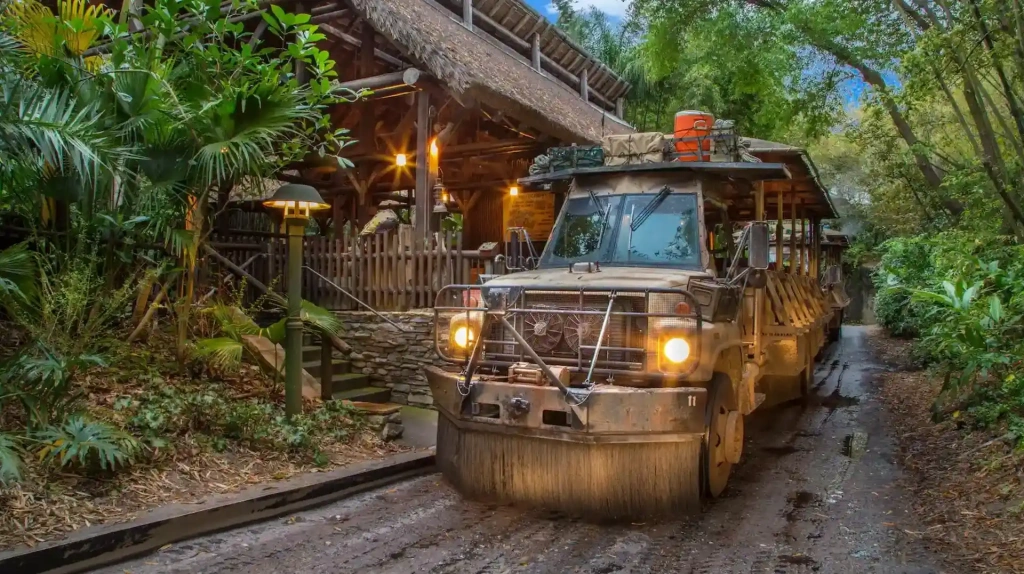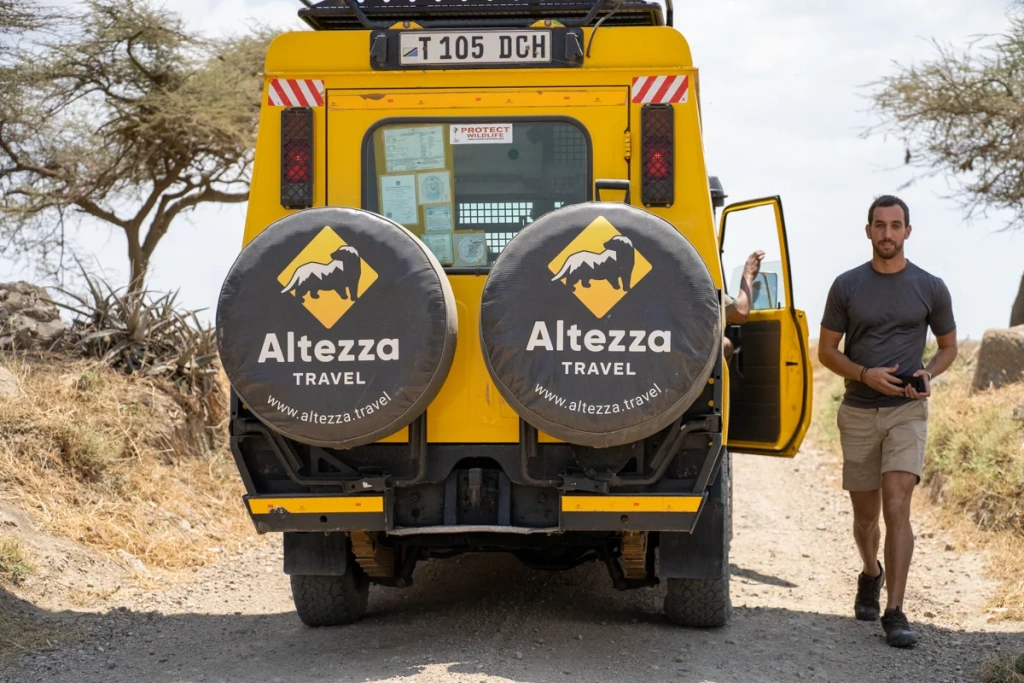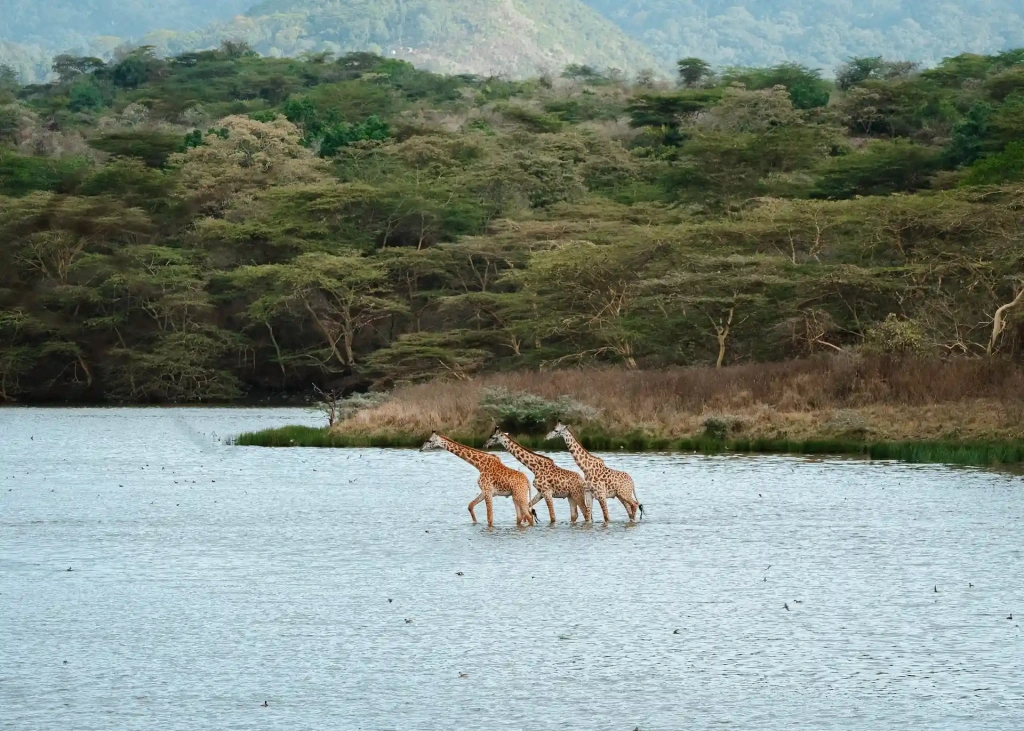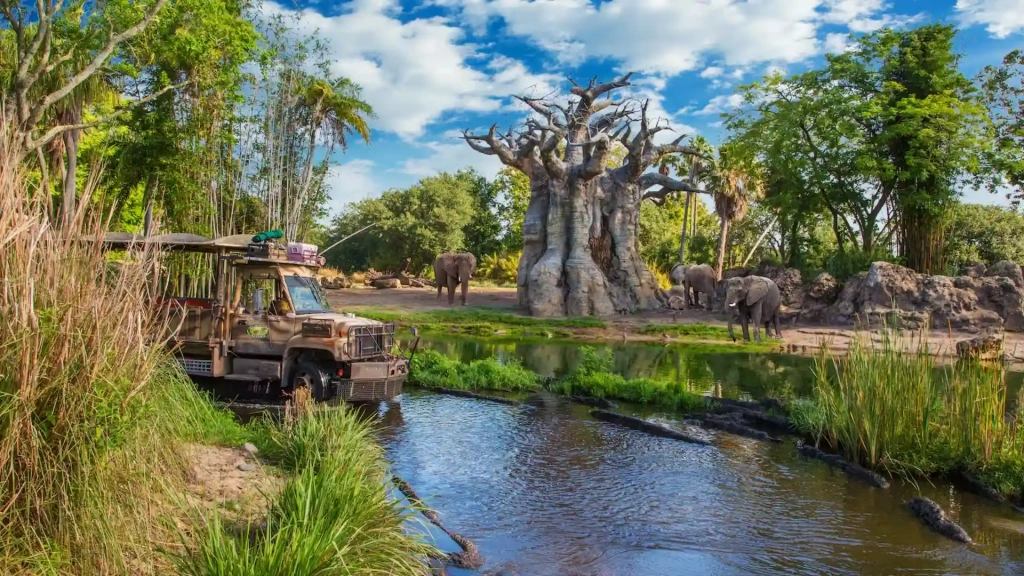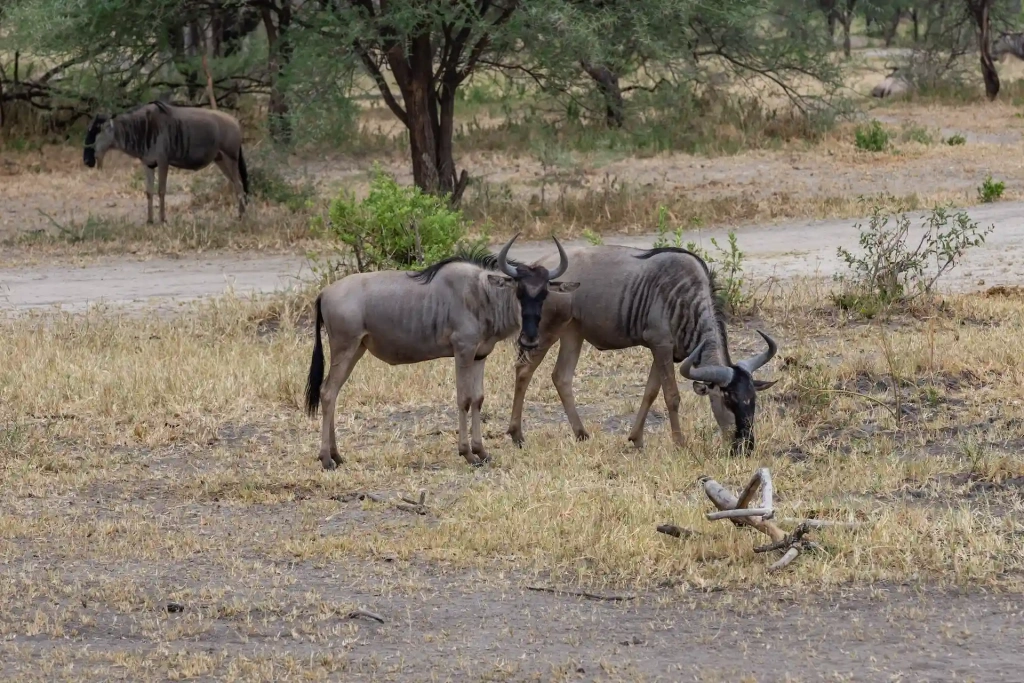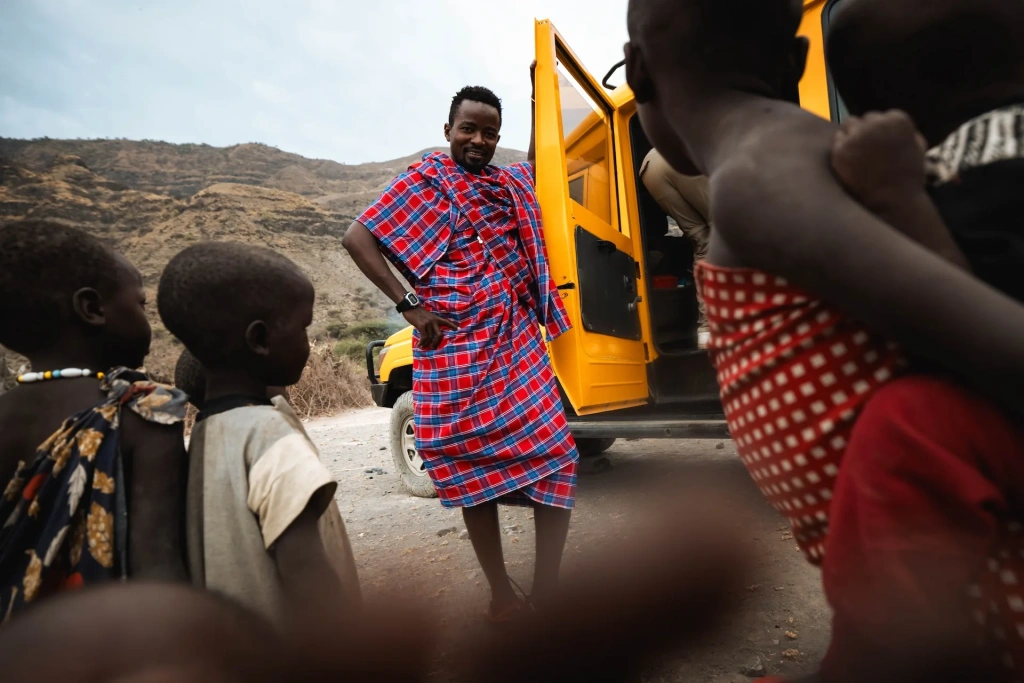Kilimanjaro Safaris is one of the most iconic attractions at Disney’s Animal Kingdom in Florida. This "mini safari" takes visitors through a carefully recreated savanna featuring real African wildlife. It’s an exciting experience, but how does it compare to a true adventure in Tanzania’s national parks?
In this article, we dive into the differences between Disney’s version and an authentic Tanzania safari.
Tanzania, located in East Africa, is renowned for its spectacular safari parks and some of the best wildlife experiences on the continent. Its unspoiled reserves are home to hundreds of animal and bird species, all set against breathtaking natural backdrops — from vast savannahs to lush forests. Whether you're planning the adventure of a lifetime or simply dreaming of one, we've put together a comprehensive guide with everything you need to make your safari truly unforgettable.

Disney's Kilimanjaro Safaris history
Walt Disney envisioned bringing real African animals to an amusement park long before Kilimanjaro Safaris opened — even before Walt Disney World was built. He initially planned to feature live exotic wildlife in the attraction, which debuted at Disneyland in California in 1955. However, he couldn’t turn this ambitious vision to life at the time. Instead, a few years later, full-scale animatronic replicas of the animals were added to the ride.
Animatronic figures, a patented innovation by the Walt Disney Company, move and produce pre-recorded sounds. However, they don’t respond to external stimuli, which sets them apart from modern robots. Still, this was a groundbreaking achievement at the time that elevated Disneyland to a whole new level.
Decades after Disney's death, his long-held dream finally became a reality. On April 22, 1998, the Animal Kingdom Theme Park in Florida opened its doors to visitors, unveiling a new attraction: Kilimanjaro Safaris, which featured real African animals.
Beyond a simple sightseeing tour, the attraction featured a fully scripted adventure. A dramatic storyline unfolded before the guests: two actors dressed as a scientist and a park ranger of the fictional Harambe Wildlife Reserve tracked down poachers to free a female elephant and her baby, Big Red and Little Red, from captivity. By the end of the tour, the poachers were found and driven off. However, by 2009–2010, the storyline was toned down, shifting the tour's focus to showcasing Africa's wildlife.
In the early days of Kilimanjaro Safaris, tours operated around the clock, including a special nighttime program called Kilimanjaro Night Safaris. Guests at The Harambe Wildlife Reserve experienced a completely different storyline, with hidden reflectors in the dense greenery simulating the glowing eyes of predators. African artists performed ritual dances around a large bonfire, adding to the immersive experience. However, the nighttime program was discontinued after 1998 due to poor visibility and low demand.
In 2016, the attraction brought back its nighttime safari version. The program now includes a breathtaking sunset simulation projected onto a massive screen at the far end of the "savanna." The massive sun sets over the horizon for several hours, illuminating the park and allowing guests to spot the animals. The nighttime program allows visitors to experience the park's twilight atmosphere while observing nocturnal African animals, such as hyenas and rhinos, in their most active state.
What is the dark ending of Kilimanjaro Safaris?
During the early test runs at Disney's Animal Kingdom, creators experimented with a storyline featuring a "Dark Ending." In this version, the workers of the Harambe Wildlife Reserve and the visitors would arrive too late to save the mother elephant, only to encounter her fake corpse at the end of the tour.
However, the scene was so distressing for families with children that Disney received numerous complaints. As a result, the heartbreaking moment was replaced with a more upbeat ending.
What animals can you see in Kilimanjaro Safaris?
The attraction houses approximately 30 species of African wildlife, including elephants, wild dogs, rhinos (both white and black), wildebeests, cheetahs, ostriches, flamingos, warthogs, lions, hippos, giraffes, crocodiles, and gazelles.
The attraction covers around 445,000 square meters (4.8 million square feet), about 20% of Disney's Animal Kingdom. Guests ride in open-air safari trucks while a guide points out the animals. The wildlife roams freely through landscapes designed to closely resemble the African savanna, just on a smaller scale.
Despite its detailed and immersive design, Kilimanjaro Safaris cannot replicate the vastness and unpredictability of an authentic safari. In Tanzania, safaris take place in vast national parks and reserves where animals live freely in their natural habitats.
For example, the Serengeti, one of Tanzania’s oldest and most renowned parks, spans 14,763 km² (5,695 mi²) — larger than any European city! Serengeti National Park is home to over two million hoofed animals, about 4,000 lions, more than 1,500 leopards and cheetahs, and around 500 species of birds. Here, you can encounter the Big Five of Africa: the elephant, lion, buffalo, rhino, and leopard.
The Great Wildebeest Migration also moves through the Serengeti. This incredible natural event sees millions of wildebeests, zebras, and gazelles traveling the same route in massive herds, following the rains year after year. The Great Migration is a continuous cycle so vast that it’s visible from satellite images. UNESCO has called it one of the most impressive natural spectacles on the planet.
Plant enthusiasts who want to see the enormous baobabs, some hundreds of years old, can visit Tarangire National Park. During the dry season, the Tarangire River, which runs through the reserve, becomes one of the few water sources for miles around. This draws a wide variety of animals and birds to the river, allowing visitors to experience the rich diversity of African wildlife.
Elephants gather at the river, stomping the riverbed to bring groundwater to the surface. Meanwhile, lions, cheetahs, buffaloes, and other local wildlife patiently wait their turn to drink. This breathtaking scene is unique to Africa. Covering 2,850 km² (1,100 mi²), Tarangire is even larger than the entire country of Monaco!
Disney's Kilimanjaro Safaris vehicles vs. real safari cars in Tanzania?
On the Kilimanjaro Safaris tour, visitors travel in specially designed open-sided GMC and Ford trucks, each accommodating up to 35 passengers. They are custom-made for the attraction and don’t closely resemble real safari vehicles.
On safari in Tanzania, specially modified Land Cruisers are used for a comfortable and safe journey through the savanna. Each truck accommodates up to seven passengers and has a pop-up roof for better wildlife viewing during stops. The trucks also have reinforced suspensions, ensuring a smooth ride over uneven, rocky terrain.
On a real African safari, you'll spend 5 to 8 hours a day in the truck, so choosing a tour operator that provides reliable, safe, and comfortable transportation is essential. Altezza Travel uses 2016–2023 Toyota Land Cruisers, each equipped with a refrigerator, comfy seats, gadget charging stations, and Wi-Fi.
Arusha National Park is another fantastic spot to observe wildlife in Tanzania. Here, you can embark on a walking safari with an experienced guide, exploring the tropical forest and watching animals from a safe distance. While this reserve is modest by African standards, spanning just 132 km² (51 mi²), it boasts a rich variety of wildlife and natural wonders. Notable highlights include Mount Meru, towering at 4,566 meters (14,980 feet) with meadows and lakes at its base, and the Momella Lakes, where flocks of pink flamingos gather during the season.
What conditions do animals live in at Disney's Kilimanjaro Safari?
The staff at Disney’s parks take great care of the animals, ensuring their well-being. Different species are housed in separate areas with hidden barriers to keep them apart. Herbivores are safely protected from predators, so you won’t see any dramatic chases or hunts.
While it's reassuring that all the animals are completely safe, it’s important to note that this environment is fully controlled. In contrast, the real wild operates quite differently, where survival and natural behavior are left to unfold without human intervention.
The Animal Kingdom organizers have employed a few clever strategies to ensure visitors see the maximum variety of species during the tour. For instance, watering holes and feeding areas are strategically placed along the route. Additionally, hidden air conditioners are installed in rocks along the road to attract animals during the intense heat.
In African national parks, no hidden devices are used to attract wildlife closer to visitors. The environment you’ll experience in Tanzania is wild, unpredictable, and, most importantly, entirely natural. That said, safaris are guided by professionals who know exactly which routes to take, ensuring you encounter as many animals as possible while providing an exciting experience.
For example, the Ngorongoro Conservation Area in Tanzania is home to around 25,000 large mammals. Like in Serengeti, you can spot the Big Five here as well. The Ngorongoro Crater itself, located within the larger conservation area, is relatively small, covering just 260 km² (100 mi²). However, it is densely populated with savanna wildlife, so you’ll encounter animals regularly throughout the safari.
The main attraction here is the ancient Ngorongoro Crater. Once a massive volcano, it has since collapsed, forming a caldera. Inside, a perfect ecosystem has developed, with abundant vegetation, a comfortable climate, and water sources, all of which support a rich variety of wildlife.
How long does Disney's Kilimanjaro Safari take compared to Tanzania safaris?
A tour at Disney's Kilimanjaro Safaris lasts 18 minutes, offering only a small glimpse of Africa’s wild landscapes. In contrast, a safari in Tanzania’s national parks is a much grander experience, with tours lasting anywhere from a few days to several weeks, depending on the itinerary you choose.
Altezza Travel offers tours lasting anywhere from one to seven days. If you want to spot as many wild animals as possible, consider the Gerenuk tour. In just four days, you'll visit the main natural attractions of Serengeti National Park and the Ngorongoro Conservation Area. If you're eager to witness the eerie red salt lake Natron, where the bodies of birds and animals become mummified, the five-day Grants tour is for you. This tour also includes visits to Tarangire Park and the Ngorongoro Crater. For a more personalized experience, contact our team to tailor an itinerary to your preferences, interests, and schedule.
Cultural experience: an attraction or a real safari?
At Disney's Kilimanjaro Safaris, visitors get a brief introduction to African tribal culture, but the experience remains surface-level. For example, the ritual dances performed around the bonfire during the nighttime attraction are staged performances rather than authentic cultural expressions.
Going on a safari in Africa immerses you in ancient cultures. With the guidance of a local expert, you'll interact with members of indigenous African tribes, learning about their way of life, daily activities, traditions, and cultural heritage. You'll also gain insight into their rituals and customs.
Tanzania is home to over 120 tribes, some with populations in the millions. Many of these tribes have unique languages, and some have preserved ancient ways of life. These communities continue to uphold traditions such as wearing traditional clothing, believing in spirits, and opting to live without many modern conveniences.
The famous Chagga tribe lives on the southern slopes of Mount Kilimanjaro, while the Maasai tribe lives in northeastern and central Tanzania. Various tour programs include visits to their villages, and this is the only place where you can experience African culture up close.
In conclusion
At its core, Disney's Kilimanjaro Safaris is a theme park attraction rather than a true wildlife experience. While Animal Kingdom's organizers have meticulously recreated the atmosphere of an African savanna with real animals, the experience feels more like a high-end zoo than a safari.
Visiting Disney World can certainly be an exciting experience, but nothing compares to the true adventure of an African safari. Tanzania’s vast landscapes, towering volcanoes, lush forests, and untamed wildlife offer an experience that no amusement park can replicate.
All content on Altezza Travel is created with expert insights and thorough research, in line with our Editorial Policy.


Want to know more about Tanzania adventures?
Get in touch with our team! We've explored all the top destinations across Tanzania. Our Kilimanjaro-based adventure consultants are ready to share tips and help you plan your unforgettable journey.















